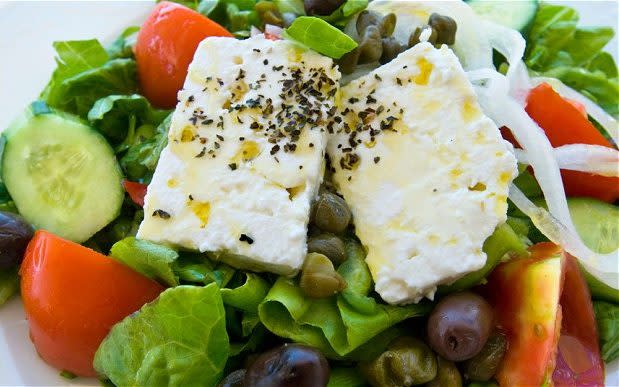The 10,000 step fallacy – and five other health myths to ignore
It's the catchy fitness principle than lodged in the minds of a generation of fitness fanatics – but the idea that you should take 10,000 steps a day may not be as helpful as it once seemed.
According to Dr Greg Hager, an expert in computer science at Johns Hopkins University, the array of apps and gadgets that advise people to walk 10,000 steps a day could actually be doing more harm than good.
Speaking at the American Association for the Advancement of Science's annual meeting, Dr Hager took issue with the 'one-size-fits-all' approach of the 10,000 steps doctrine, pointing out that it was based on just one study from 1960 of Japanese men.
“Some of you might wear Fitbits or something equivalent, and I bet every now and then it gives you that cool little message 'you did 10,000 steps today'," he said. "But why is 10,000 steps important? Is that the right number for any of you in this room? Who knows? It’s just a number that’s now built into the apps.
“I think apps could definitely be doing more harm than good.”
The five most ridiculous fitness trends ever
Of course, it's predominantly true that walking is good for you – it's low intensity, good at promoting blood flow, and, according to a 2015 study, a useful way of relieving stress. But Dr Hager's point is that you shouldn't necessarily live your life worrying about achieving 10,000 steps (five miles, roughly speaking). Instead, you might be better served by concentrating on walking a bit every day and finding out a distance that works for you.
The 10,000 steps myth is not the first to have infiltrated the fitness community. Here's five others, which you can henceforth approach with caution ....
MYTH 1: Sitting at a desk all day will kill you
Despite the macabre surge of horror stories about how your desk job is turning you into a cross between Jabba the Hutt and a latter-day Henry VIII, an extensive study of 5,000 people over 16 years, conducted by the University of Exeter and University College London, found that extended periods of sitting are not associated with an increased risk of dying – provided that people stay physically active.
A separate study by the University of Missouri’s School of Medicine proved that regular 10-minute walks during the working day reverse any adverse effects on the heart caused by sitting down. So long as you weave low-intensity physical activity – like walking to the park or clambering up the stairs to the office – into your daily routine and commit to regular exercise sessions, there is no need to quit your desk job and become a Zumba instructor.
MYTH 2: Cheese is your enemy
For years cheese has been vilified as a fat-stained ticket to an early grave but an intriguing study by scientists at Aarhus University in Denmark, published in the Journal of Agricultural and Food Chemistry, revealed that men who regularly consume cheese have higher levels of the compound butyrate, an anti-inflammatory fatty acid which is associated with reduced obesity, lower cholesterol and a higher fat-burning metabolism.
Stick to lower-fat options like feta, cottage cheese and ricotta and avoid high-fat choices like mascarpone and Red Leicester.
MYTH 3: Skip the weights room if you want to lose fat
Venturing into the gym weights room, with its unmistakeable fug of sweat and intimidating cacophony of clanging metal, it’s easy to assume that this is a realm reserved exclusively for men hell-bent on sculpting the physique of a Marvel superhero. But lifting weights is also a potent way to burn body fat.
Yes, cardiovascular training like running and cycling may burn more calories per minute, but combining this kind of aerobic exercise with weight training will aid your cause. That’s because muscle burns more calories than body fat during both exercise and inactivity – so people with more muscle torch extra calories even when they’re sitting on the sofa at home watching Sherlock.
By building a few extra kilograms of muscle, you can help shed yourself of unwanted blubber – a point demonstrated in a study by Pennsylvania State University which proved that overweight people who performed a mix of weight-training and aerobic exercise lost more body fat than those who just did cardio.
MYTH 4: Low-intensity exercise is a waste of time
High-intensity interval training has been shown to burn body fat, boost cardiovascular fitness and increase metabolism – all within the time it normally takes to watch an episode of Coronation Street.
But it’s a mistake to conclude that old-fashioned forms of longer, lower-intensity exercise have no value. If you take part in endurance sports, such as cycling or running, extended low-intensity sessions will train your body to burn fat instead of carbohydrates for energy (which is a more efficient form of fuel) and condition the mitochondria – the energy powerhouses in your cells – to work more efficiently. The result? You can run or pedal for longer.
There could be other health benefits too. A study by experts at Maastricht University suggested that lower-intensity exercise could be more effective than high-intensity exercise at improving insulin sensitivity and blood lipid levels – both key markers linked to conditions like diabetes and obesity.
MYTH 5: Giving up alcohol is good for you
Waking up with a skull-splitting hangover five times a week isn’t going to do much for your physical vitality, but alcohol isn’t entirely bad if consumed in moderation.
Experts at Oregon State University found that moderate alcohol consumption is linked to higher bone density and a lower risk of osteoporosis, while a study by the University of Calgary showed that people who booze in moderation enjoy higher levels of ‘good’ cholesterol and are 14-25pc less likely to develop heart disease than those who stoically stay off the sauce.





